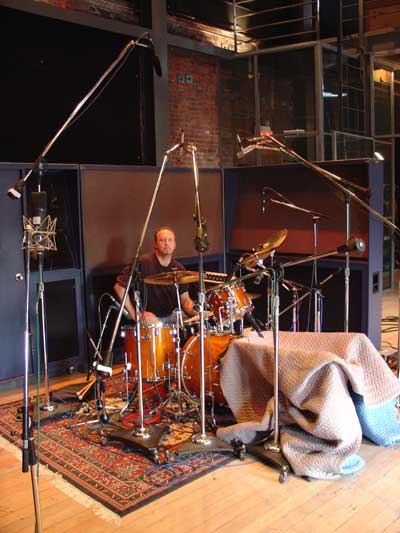Chart Reading (continued)
*YOU NEED TO BRING YOUR SKILLS IN THE AREA ALONG WITH YOUR PLAYING AND ARTISTIC VOCABULARY.*
For example I’ve been on large sessions where there have been charts for a piece of music that are literally 8 to 10 pages long. I’ve had microphone boom stands surrounding me with charts taped end to end encircling me entirely.
But since I’ve worked on the skill of reading I have the ability to pull it off but I’ll be honest, it can push you to the very edge of your abilities.
Long charts are most often the result of a producer or writer printing out a piece of music notation that is meant to encompass a number of different instruments. So the chart is double staved or sometimes triple staved. To the new comer this means that you’re reading one line and then jumping down either 2 or 3 lines to read the next of your designated stave.
You don’t want to be asleep in this situation.
I don’t have the space here to go into a reading lesson. There are many materials that are well written and make good sense to the new person if you happen to be one. You can step through the process of reading and start to incorporate it into your playing.
The incorporation of reading into your playing quite frankly takes a lot of getting used to.
*AT THIS POINT IF YOU’RE NEW TO CHART READING…
I would encourage you to move on from this chapter BUT… please go out and get yourself as much good source material as you can find on the subject. This is just a discipline that can be learned.
Look for a teacher who can speed up the process for you. Then return to this chapter and continue..
Join me for the next installment!
. . . . . . . . . . . . . . . . . . . . . . . . . . . . . . . . . . . . . . . .






